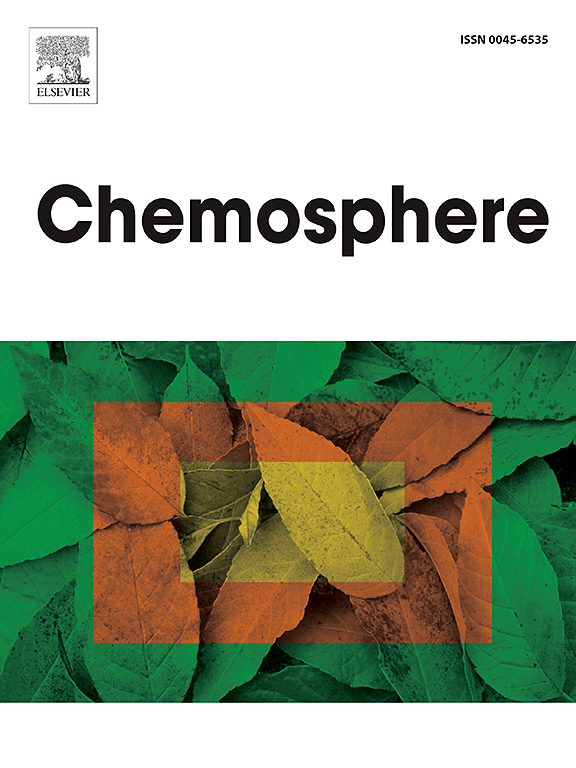亚马逊金矿开采和生态系统破坏:对脆弱社区和环境恢复的影响
IF 8.1
2区 环境科学与生态学
Q1 ENVIRONMENTAL SCIENCES
引用次数: 0
摘要
在过去的50年里,金矿开采向亚马逊环境中引入了大量的汞。这种剧毒污染物广泛传播,并通过该地区复杂的食物网进行生物放大,最终到达已经严重暴露的土著和河岸社区。一些土著民族依赖鱼类作为蛋白质的主要来源,表现出水俣病的症状。虽然汞接触正在增加,但人口的健康状况受到威胁决定了其复原力的退化。考虑到汞会影响脆弱社区的免疫系统,了解汞的分布和命运对于缓解和保护至关重要。本综述旨在讨论与手工采金有关的关键问题,包括水的污染和悬浮颗粒物的输入,这些问题促进了环境退化,损害了土著和沿岸社区的健康。值得注意的是,在2023年至2024年期间,亚马逊雨林延长的燃烧季节加剧了汞向大气中的扩散,进一步将其沉积到陆地和水生生态系统中,可能对汞的甲基化产生影响。还讨论了汞在鱼类中的生物放大,通过营养链,作为人类暴露的主要途径。最后,对生物标志物的研究表明,对细胞内生化过程的更深入了解可能会导致确定防汞食品和开发新的疗法和药物,从而减轻汞对人类的影响。提出了缓解措施,并得出结论认为,必须启动大规模的亚马逊恢复计划,同时制定金矿开采法规和执行环境法。本文章由计算机程序翻译,如有差异,请以英文原文为准。

Goldmining and ecosystem disruption in the Amazon: Impacts on vulnerable communities and environmental restoration
For the last 50 years, goldmining has introduced large amounts of mercury to the Amazonian environment. This highly toxic contaminant spreads widely and undergoes biomagnification through the region's complex food web, ultimately reaching Indigenous and riparian communities that are already heavily exposed. Some indigenous ethnic groups rely on fish as their primary source of proteins, showing symptoms of the Minamata disease. Although the mercury exposure is increasing, the threated health conditions of the populations determine the degradation of their resilience. Understanding the distribution and fate of mercury is critical for the mitigation and protection, considering that mercury affects the immune system of vulnerable communities. This review aims to discuss the key issues associated with artisanal goldmining, including contamination of waters, and suspended particulate matter inputs, which promote environmental degradation and harm the health of Indigenous and riparian communities. Notably, between 2023 and 2024, the prolonged burning season in the Amazon rainforest intensified mercury spreading into the atmosphere, further depositing it into terrestrial and aquatic ecosystems, with probable consequences on the methylation of Hg. The biomagnification of mercury in fish, through the trophic chain, as the main path of exposure for humans, was also discussed. Finally, research on biomarkers has shown that a deeper understanding of the biochemical processes within cells could lead to the identification of mercury-protective foods and the development of new therapies and medicines that could mitigate the mercury effects on humans. Mitigation actions are proposed, and it is concluded that large scale Amazon restoration initiatives have to be started, together with regulations for goldmining and enforcement of environmental laws.
求助全文
通过发布文献求助,成功后即可免费获取论文全文。
去求助
来源期刊

Chemosphere
环境科学-环境科学
CiteScore
15.80
自引率
8.00%
发文量
4975
审稿时长
3.4 months
期刊介绍:
Chemosphere, being an international multidisciplinary journal, is dedicated to publishing original communications and review articles on chemicals in the environment. The scope covers a wide range of topics, including the identification, quantification, behavior, fate, toxicology, treatment, and remediation of chemicals in the bio-, hydro-, litho-, and atmosphere, ensuring the broad dissemination of research in this field.
 求助内容:
求助内容: 应助结果提醒方式:
应助结果提醒方式:


